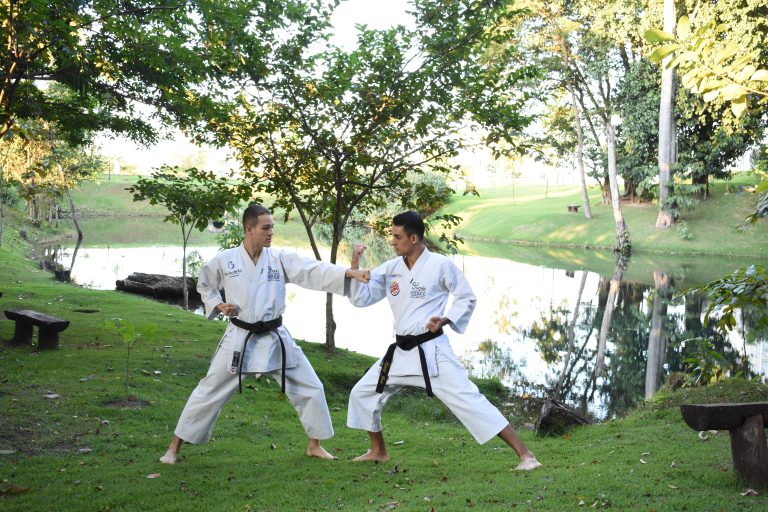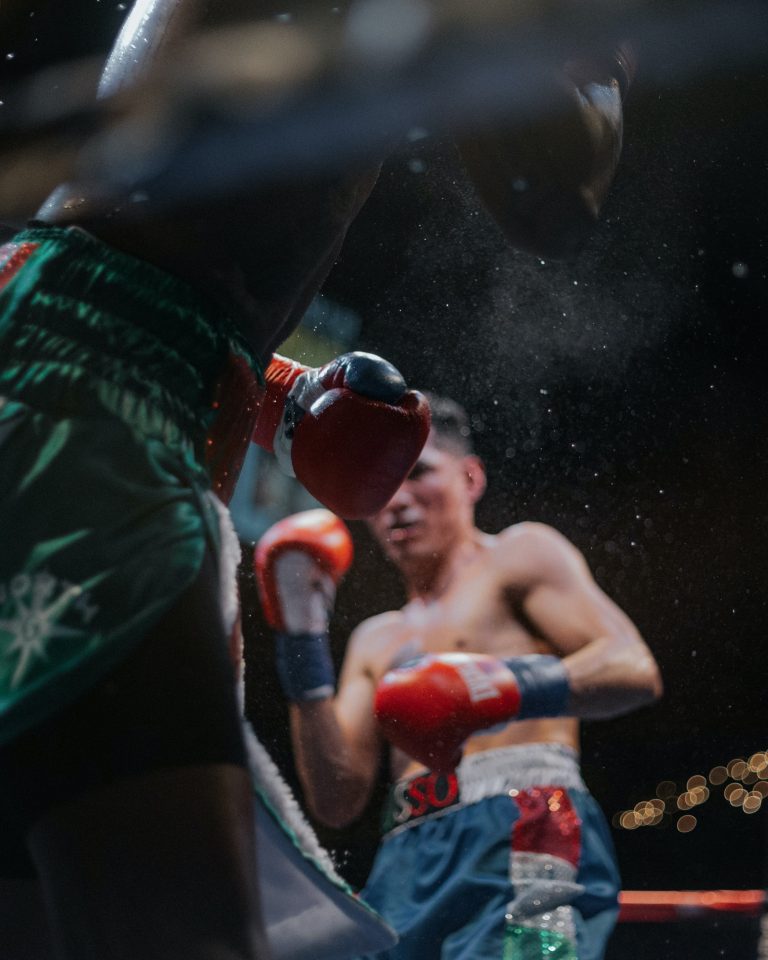How Long Does It Take to Get a New Belt in Karate?
Karate is a martial art that is highly respected around the world. It is known for its use of punches, kicks, and strikes to defend oneself in situations of danger. Karate is often based on specific levels that students must accomplish, and the most common way of honoring these levels is with a new belt. So how long does it take to earn a new belt in karate?
The Belt System in Karate
Karate students are usually organized into ranks and must progress through them as they learn more about the art. The belt system is a simple way to recognize a student’s progress and development. Different karate schools may have different belt systems or levels, with a few of them having up to 10 levels. The belts usually come in different colors, and the colors designate the ranks of the student. The colors and the time required for advancing to the next level can vary from one karate school to another.
Advancing to a Higher Belt Level
To advance to a new belt level in karate, the student must demonstrate their aptitude in various areas, including their technique, form, and knowledge of the art. A student’s progress is monitored by their instructor, who will determine when a student is ready to take on the challenges of the next level. Testing for each level can vary between schools and instructors. However, there are specific areas in which students are generally tested to advance to the next level.
Testing Requirements for a New Belt Level
The testing requirements for a new belt level in karate vary between schools, but generally, they include three primary areas of testing — kihon (basics), kata (forms), and kumite (sparring).
Kihon (Basics)
Kihon, or basics, is the foundation of karate training, and it includes the fundamental movements of the martial art. It includes techniques such as punches, blocks, kicks, and strikes. Students must demonstrate a high degree of proficiency in executing these basic movements. Kihon is usually assessed during a student’s grading examination.
Kata (Forms)
Kata, or forms, is a solo performance of the movements learned during training. A student is required to perform katas in front of a grading panel, which comprises senior and experienced karate experts. The number of katas required varies based on the belt level. Kata is an essential aspect of karate, and each form has its unique meaning and significance.
Kumite (Sparring)
Kumite, or sparring, is where students get a chance to apply their techniques in a practical setting. During a grading examination, students are paired with other students of similar skill and are required to demonstrate their ability to attack and defend.
The Time Required to Earn a New Belt Level
The amount of time required to earn a new belt in karate can vary depending on different factors like age, dedication, and skill level. It’s essential to understand that belt promotions are not rewarded for merely showing up but are the result of consistently working hard and training over time.
In general, it takes three to four years to earn a black belt in karate. The lower-ranked belts like white or yellow require fewer years of training, usually around six months to a year. Orange, green, and blue belts take about two to three years to earn, while brown belts can take anywhere from three to five years.
Factors that Affect Belt Advancement Time
The time frame it takes to advance through karate belt levels varies significantly among students based on several factors.
Dedication and Consistency
Consistency is the key to mastering any skill, including karate. A student who trains consistently with dedication can progress through the karate belt levels faster than others.
Instructor Requirements
Karate schools have different curriculum requirements based on their philosophies, teaching methods, and beliefs. For example, some schools may have more stringent requirements for the advancement of a certain belt level. Therefore, students need to know what their instructor’s requirements are to advance successfully.
Age and Physical Ability
Age and physical ability can also affect the time it takes to advance through belt levels in karate. Younger students usually progress faster as their bodies are more flexible and adaptable to the physical demands of karate training. Older students may take longer due to physical limitations like injury or illness.
How Long Does It Take To Get A New Belt In Karate? – Frequently Asked Questions
Karate is an ancient martial art that has been practiced for centuries. It is the perfect way to strengthen your body and mind, instill discipline, and develop camaraderie with fellow practitioners. Karate is often associated with the colored belts that are awarded to students based on their progress and mastery of techniques. As a result, many aspiring karate enthusiasts ask, „how long does it take to get a new belt in karate?“ In this blog post, we answer some of the most frequently asked questions about the time it takes to get a new belt in karate.
1. What are the different belt colors in karate?
Karate uses a system of colored belts to indicate the progress made by students in the art. The colors of the belts vary from one school to another, but the most common colors and their corresponding levels are:
– White belt (beginner)
– Yellow belt (novice)
– Orange belt (advanced novice)
– Green belt (intermediate)
– Blue belt (advanced intermediate)
– Brown belt (advanced)
– Black belt (expert)
2. How long does it take to get a new belt in karate?
The time it takes to progress from one belt to another varies depending on many factors such as the student’s age, level of dedication, and practice frequency. Typically, it takes at least three months to progress from a white belt to a yellow belt. Two to three years are required to achieve a black belt in karate, but it can take longer. Ideally, your sensei or instructor will provide you with a syllabus outlining the requirements and expected timelines for each belt examination.
3. What are the criteria for passing a belt exam?
Each belt examination is unique and may have specific criteria, but common criteria for belt advancement include:
– Demonstrating basic techniques such as punches, kicks, blocks, and stances.
– Performing kata (a sequence of techniques in a specific order)
– Sparring with a partner, demonstrating effective technique and control
– Answering technical questions about techniques and karate philosophy
4. What if I fail a belt examination?
If you fail the examination, don’t be discouraged. Failing is an opportunity to learn and perfect your techniques, and it’s vital to learn from your mistakes. Most schools allow students to take another exam after a reasonable period to retake the examination.
5. How can I accelerate the progress from one belt to another?
The key to mastering karate is consistent practice, dedication, and effort. Here are a few tips to accelerate your progress:
– Practice regularly and show up at class on time. Consistently practicing and maintaining a consistent schedule will help build muscle memory and confidence.
– Stay focused and work hard in class. Pay attention to your sensei, focus on technique, and try to improve on each class.
– Set goals and challenge yourself. Setting achievable goals increases motivation and keeps you focused on your progress towards the next belt.
– Study the history and philosophy of bushido; understanding the martial art’s heritage and philosophy can help in mastering the art.
How Long Does It Take to Get a New Belt in Karate: A Step-by-Step Guide
If you are practicing karate or thinking of starting, you might be wondering how long it takes to get a new belt. Karate, like most other martial arts, uses a belt system to mark a practitioner’s progress and skill level. Getting a new belt is a big achievement that requires a lot of hard work, dedication, and commitment. In this guide, we will provide you with all the information you need to know about the belt system in karate and how long it takes to progress to the next level. So, let’s get started.
Understanding the Belt System in Karate
Karate has a color-coded belt system that involves several ranks that a practitioner has to go through to reach the top level. The belt rank is representative of the skill level and experience of the practitioner. There are ten levels of karate belts, each with a different color, and the order of the karate belt colors represents the level of the practitioner.
The ten levels of karate belts are:
1. White belt
2. Yellow belt
3. Orange belt
4. Green belt
5. Blue belt
6. Purple belt
7. Brown belt
8. Red belt
9. Black belt
10. The Dan belt (black belt with a higher degree)
As a beginner, you will start with the white belt and gradually progress to the black belt. The black belt is considered to be the highest achievable rank in karate.
How Long Does It Take to Get a New Belt in Karate?
The duration of time required to receive a new belt in karate is different for each practitioner. The time it takes to progress to the next level depends on several factors, including the practitioner’s training efforts, schedule, skill level, and the requirements set by their sensei (instructor).
A beginner responsible for developing the basics, proper stances, and strikes usually train for approximately 6-8 months before progressing to the next level.
The following timeline provides an average timeframe of how long it takes to get a new belt in karate for a practitioner attending classes twice a week:
1. White Belt – 6 months
2. Yellow Belt – 1 year
3. Orange Belt – 1 year and 6 months
4. Green Belt – 2 years
5. Blue Belt – 2 years and 6 months
6. Purple Belt – 3 years
7. Brown Belt – 3 years and 6 months
8. Red Belt – 4 years
9. Black Belt – 4-5 years
It’s important to note that the timeframes outlined above are just an average estimate, and they can vary depending on each practitioner’s progress and dedication during training.
The Process of Earning a New Belt in Karate
Earning a new belt in karate isn’t an easy feat. It requires hard work, dedication, and commitment. The process of earning a new belt in karate involves several steps, including the following:
1. Attend Regular Classes: Make sure you attend your karate classes regularly. This will help you develop your karate skills, technique and improve your fitness.
2. Practice Outside of Class: Remember to practice outside of class by yourself or with other practitioners. Consistent practice will help to refine your techniques and become better each day.
3. Compete: Competitions are an excellent way to test your karate skills against other practitioners, learn new techniques, and gain experience.
4. Grading: Your sensei will assess you regularly to ensure you meet the requirements for the next level. This process is known as ‚grading.‘ Grading usually involves a test where you demonstrate your karate skills and knowledge by engaging in forms, sparring, and answering questions.
5. Promotion: Once you pass your grading, your sensei will award you the new belt (based on the ranking system outlined above) during a special ceremony called ‚promotion.‘
Conclusion
Achieving a new belt in karate is a significant accomplishment that requires hard work, dedication, and commitment. It’s important to understand the belt system in karate and what it takes to achieve each level. Remember to train hard and believe in your ability, and you’ll surely progress through the belt system in no time.
We hope you’ve found this guide helpful. If you’re interested in learning karate, we encourage you to find a reputable dojo near you and start your journey today.
Inhaltsverzeichnis






